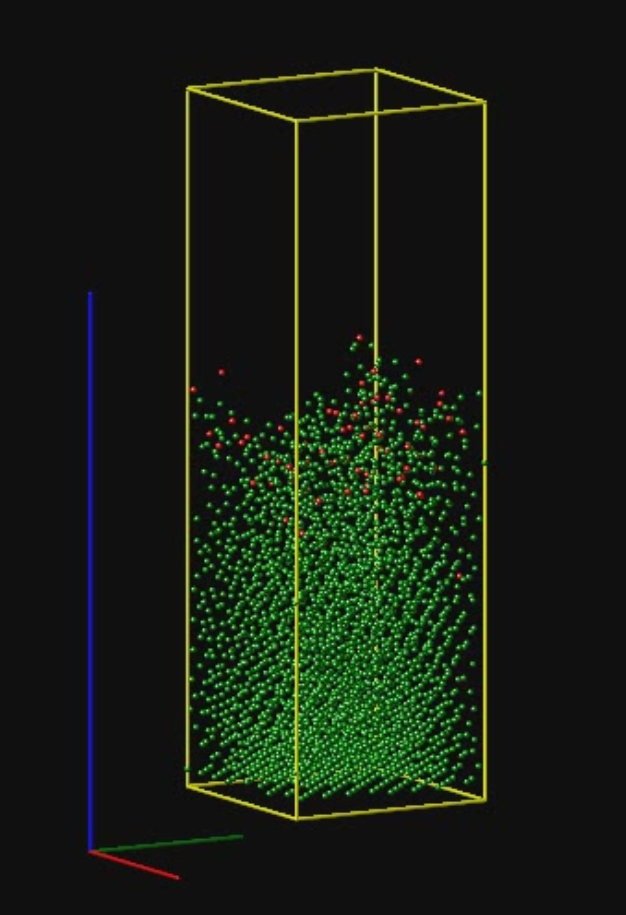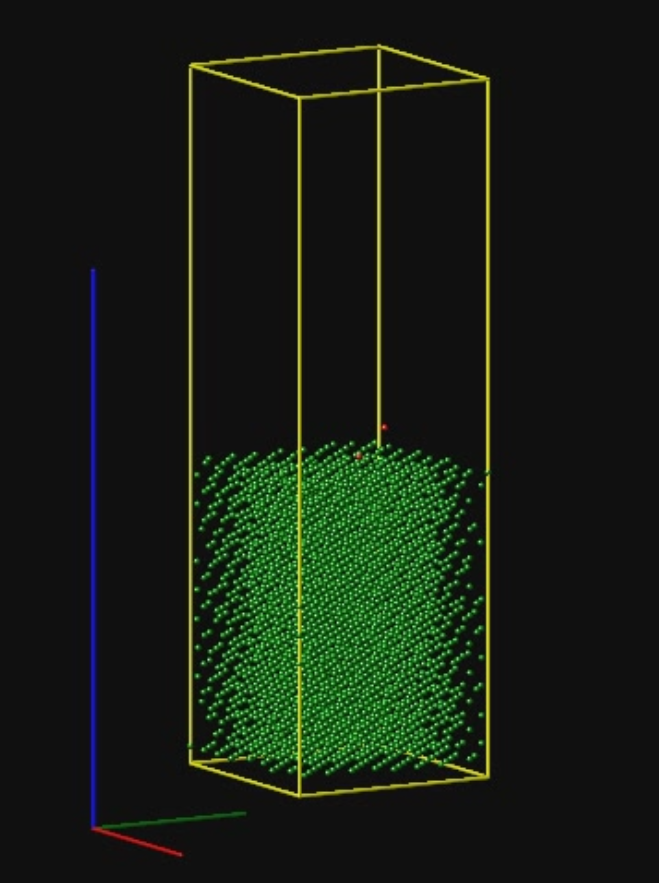Hi,
I am simulating impact of silver with atomic oxygen to view erosion. During impact I am seeing a significant growth of the substrate which is not possible. Referring to the images, after impact the substrate is 50% larger. While the atomic oxygen can form an oxide, this maximum thickness is not nearly large enough to account for this and would never cause such a growth in thickness. Therefore, some of these atoms are no longer bonded and have eroded.
I tried using fix reax species to track what fragments broke off, but even in the case below it still considers it one large bonded slab of silver. When I try to reduce the cutoff it just causes my silver slab to no longer be bonded. Why is reax species calling this one large slab when, based on common sense, it is not possible for it to be a coherent bonded structure?
I am seeing literature on other studies instead assigning a cutoff distance from the original surface and saying if it is past this it is not longer connected. I suppose this is a reasonable work around?
Thanks


Fix reax/c/species is a diagnostic tool that does not affect the dynamics at all. Change fix reax/c/species bond order cutoff for Ag pair. In your picture, how should species analysis of “ a coherent bonded structure” look like?
Ray
Ok. To clarify:
-
I know the cutoff is typically 0.3, but do not see a unit for what this is? The Ag-Ag bond distance is 3A, how do I convert this to a cut off?
-
To me, the expansion observed in my picture after impact means that all those atoms cannot still be bonded all together (when compared with the initial picture).
Even if an oxide were forming, its maximum thickness would only be a few A based on the number of oxygen available. Therefore, even though reax species is calling it one large bonded structure this cannot be the case. Are you saying to modify the cutoff in reax species?
As an alternative I could define a distance from original surface and then analyze the xyz the track those silver atoms beyond this distance? Previous literature does this by defining a max distance from the original surface based on bond lengths. Does this make sense?
Thanks!
Bond order cutoff is dimensionless. Just use 0.0 to get rid of all Ag bonds in the analysis. Again, this does not affect dynamics. Either the impact energy or the fluence (or even both) was too high causing the substrate to explode/expand. Please discuss your simulation strategy with your advisor.
Ok that makes sense. My velocity was 7.4 km/s (atomic oxygen impact speed) which was converted to angstrom per femtosecond and I was careful to divide this speed by the lattice distance as units were lattice. This high speed should definitely cause significant lattice distortion. I understand what you mean about the cutoff, it doesn’t change the dynamics of the system, just a way to label molecules. I am thinking I will go with the cutoff as a distance from the substrate based on a multiple of the bond distance as per some studies. This way seems to match experinental values well. Assuming this doesn’t sound wrong to you that is? I appreciate your consultation on this.
As a follow up,I should have said the goal was to count erosion/sputtering. So the expansion/explosion is expected, it was just the bonding from reaxc that had me confused.
Liam

